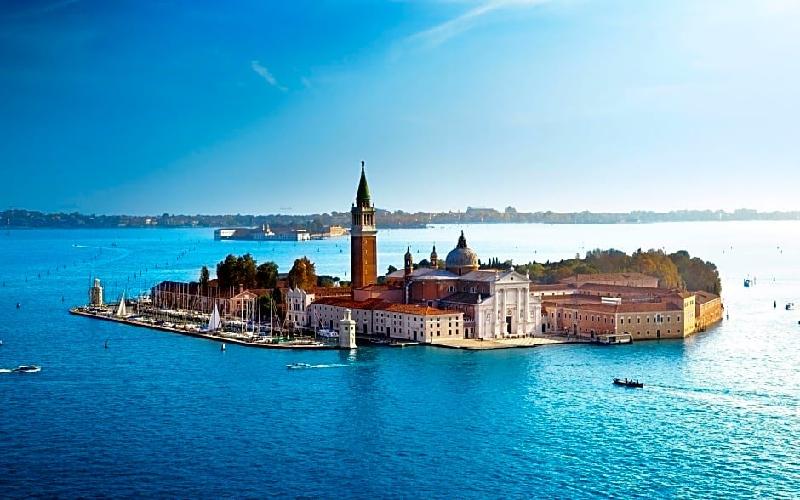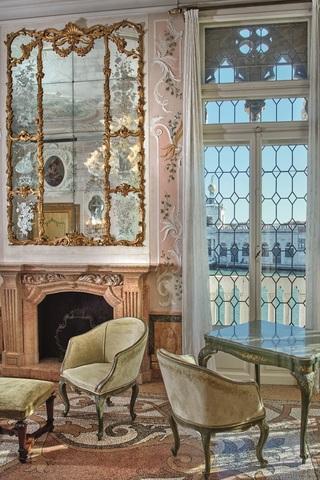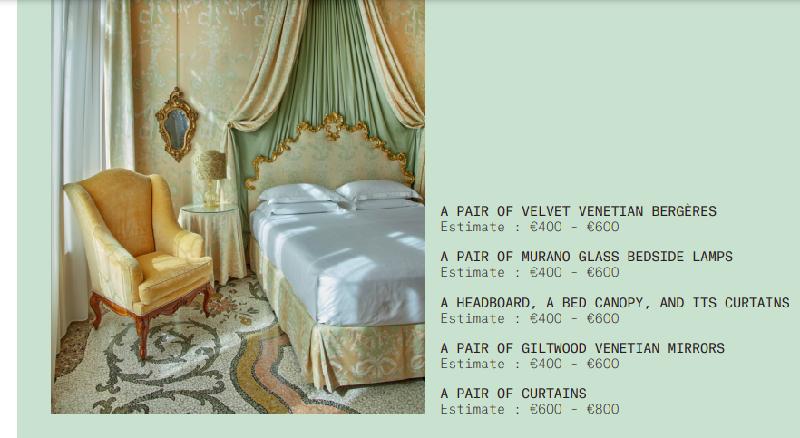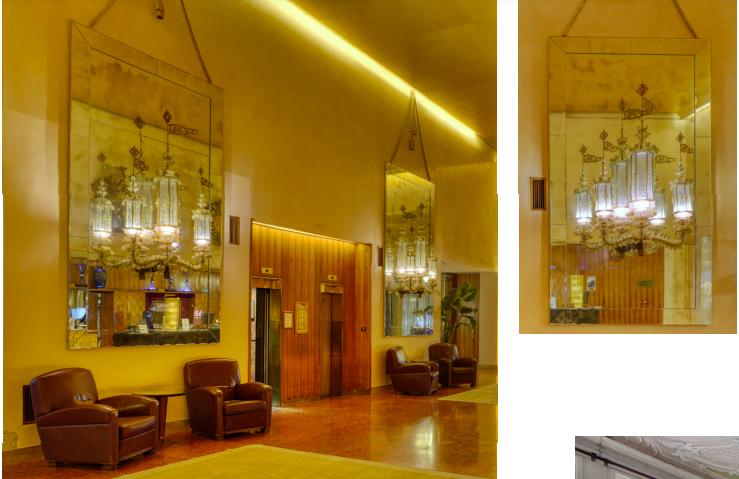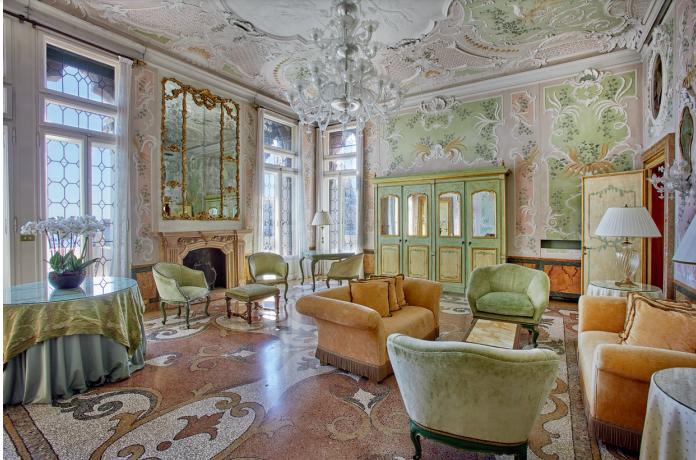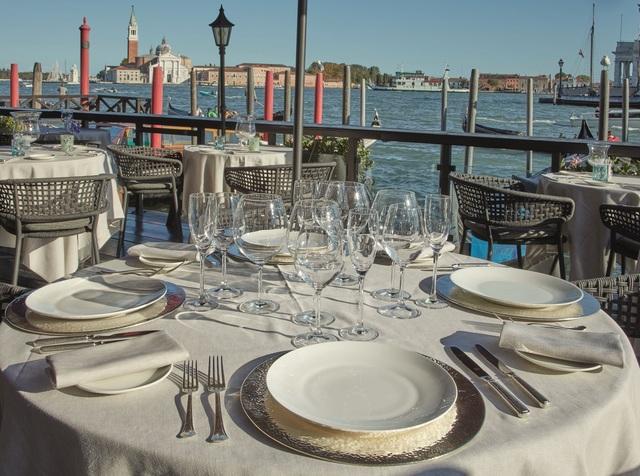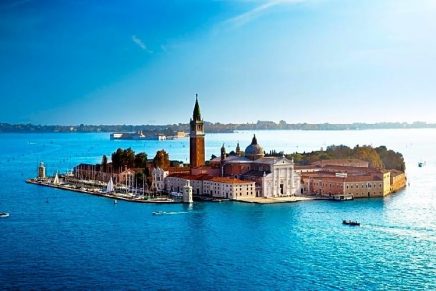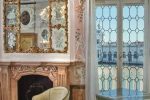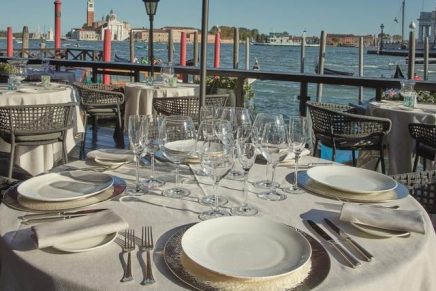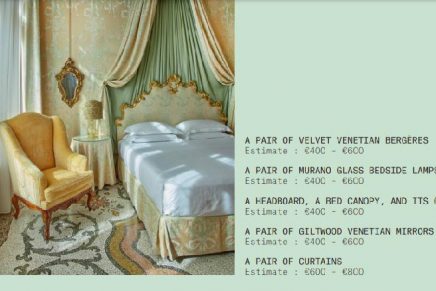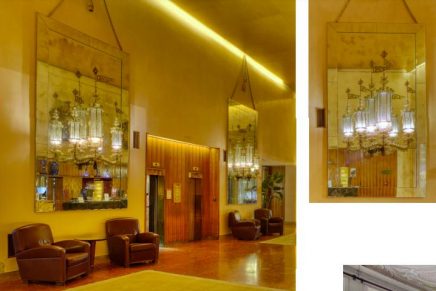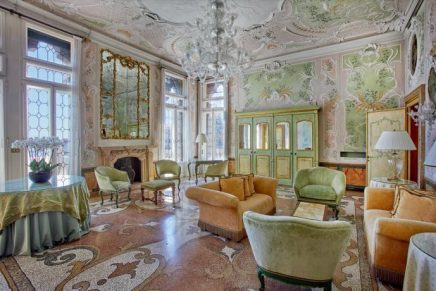The Hotel Bauer Palazzo is now closing its doors for three years and, in keeping with its history, is undergoing a complete transformation. The ambitious project with sustainability at its heart is being conducted by the renowned architect Alberto Torsello and the interior design group BAR Studio. It will preserve many of the palace’s historical elements and redefine Venetian luxury once again. The date for its reopening is already set for 2025.
From 24th to 29th April, Artcurial, the French auction house which has its headquarters at the historic Hôtel Marcel Dassault in Paris, will present the furniture of the Hotel Bauer Palazzo, a famous Venetian palace. Located in the heart of the city of the Doges, it overlooks the Grand Canal and offers its distinguished guests a magnificent view of San Giorgio Maggiore, Punta della Dogana and Santa Maria della Salute. Through its Murano glassware, furniture, and silks from the Houses Rubelli and Bevilacqua, this sale of more than 4,000 lots celebrates the Venetian identity of this prestigious institution. From torchbearers (portes torchères) to tableware, enthusiasts as well as collectors can experience the essence of this historic landmark.
After 142 years of activity, the Hotel Bauer Palazzo is embarking on a new chapter in its history.
Reminiscent of the 1940s, when its state-of-the-art renovation established it as a reference for comfort, the institution is continuing its transformation with the aim of redefining the standard of Venetian luxury in 2025.
The 10,000 items offered for sale continue to resonate with the voices of illustrious visitors who, from Marilyn Monroe to King Charles and Camilla, have contributed to the reputation of the hotel.
From Giovanni Sardi’s Gothic-Byzantine style to Marino Meo’s modernist travertine, the hotel’s facades alone sum up the eclecticism of this place where everything is a contrast and a combination at once. Art Deco meets Baroque style, painted wood meets gilded wood, Venetian millefiori and Murano glass meet English furniture by Maitland Smith. The sumptuous silk fabrics of the Rubelli House, in many variations, appear to serve as a link. In each room they create a unique universe and testify to a commitment to excellent Venetian craftsmanship.
The most important Venetian and Italian manufacturers were commissioned by the Bauer during its successive renovations. Among them: the House of Rubelli and the House of Bevilacqua, the upholsterer Alessandro Vianello, the Italian furniture maker Bussandri and the Venetian master glassmaker Seguso Vetri d’Arte.
To him we owe the extraordinary pair of three-armed sconces made of blown, pinched and gold-spangled glass that welcomed visitors from all over the world in the great reception hall (€30,000 – €50,000).
During the numerous events organised for the Biennale and the carnival, curtains, tablecloths, and tapestries in shimmering colours contributed to the magical atmosphere of the palace. Three pairs of water green satin curtains from the Bevilacqua factory are estimated between €4,000 and €6,000. The headboards, upholstered in Rubelli fabric (€200 – €300), will also delight enthusiasts.
The blend of lines and curves, typical for the style of the Bauer Palazzo, is reflected in its furniture. Among the pieces on offer, curved Venetian chests of drawers (€800 – €1,000) stand alongside armchairs (bergères gondoles) (€200 – €600) and other characteristic pieces, such as a trumo cabinet (meuble à deux corps) in Baroque style from one of the Royal Suites, estimated €1,500 – €2,000.
From the monumental pair of oil paintings in the Salone delle Feste attributed to Claudio Francesco Beaumont (€40,000 – €80,000) to the contemporary furniture on the terrace of the Settimo Cielo restaurant, this event will give everyone an opportunity to own a piece of the Venetian legend In an 18th century building optimally located on Campo San Moisè, between St. Mark’s Square and the Grand Canal, the Grand Hôtel d’Italie Bauer-Grünwald opened its doors in 1880. Founded by a young Austrian entrepreneur, Julius Grunwald, and the daughter of a Venetian nobleman, Mr. Bauer, it soon became the place to be for high society.
An important period of restoration and construction work began in 1930 under the impetus of Arnaldo Bennati, a Ligurian shipbuilder, who reshaped the hotel until its reopening in 1949. The main entrance, next to the baroque church of San Moisè, was given a modernist facade designed by Marino Meo. For the first time, a hotel in the city of the Doges was equipped with central heating and air conditioning.
The palace and its 210 rooms boasted state-of-the-art comfort and modernity.
Giuseppe Berti added another floor to the building, offering visitors the Settimo Cielo, a terrace with a breath-taking view that remains the highest in Venice to this day. Kings, prime ministers, intellectuals, artists and businessmen all flock to it.
A second phase of renovation at the end of the 1990s brought the hotel up to the standards of the time, while preserving the timeless and mythical ambiance of the building. The diamond-shaped stained-glass windows of the Royal Suite provide a glimpse of passing gondoliers and the floor mosaics continue to resonate with the footsteps of Elizabeth Taylor.
In the De Pisis restaurant, refined Italian specialties are served one after the other as the hours stretch on. Already in “Seventh Heaven” (English for Settimo Cielo) guests enjoy their first Spritz whilst they can imagine Jean Cocteau drawing “his Venice” in the distance.
‘‘Everything must change so that everything can stay the same,’’ – wrote Giuseppe Tomasi di Lampedusa.

